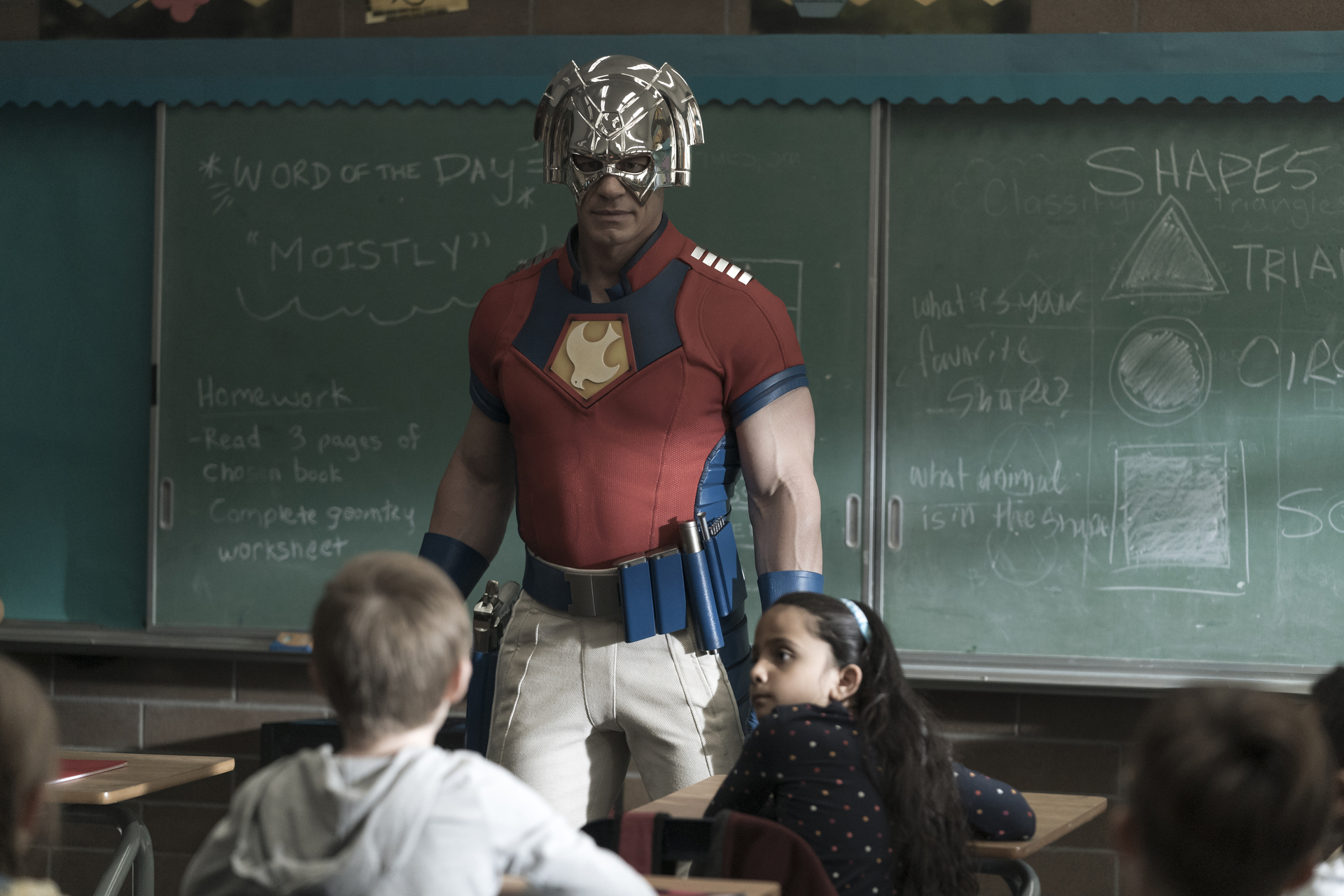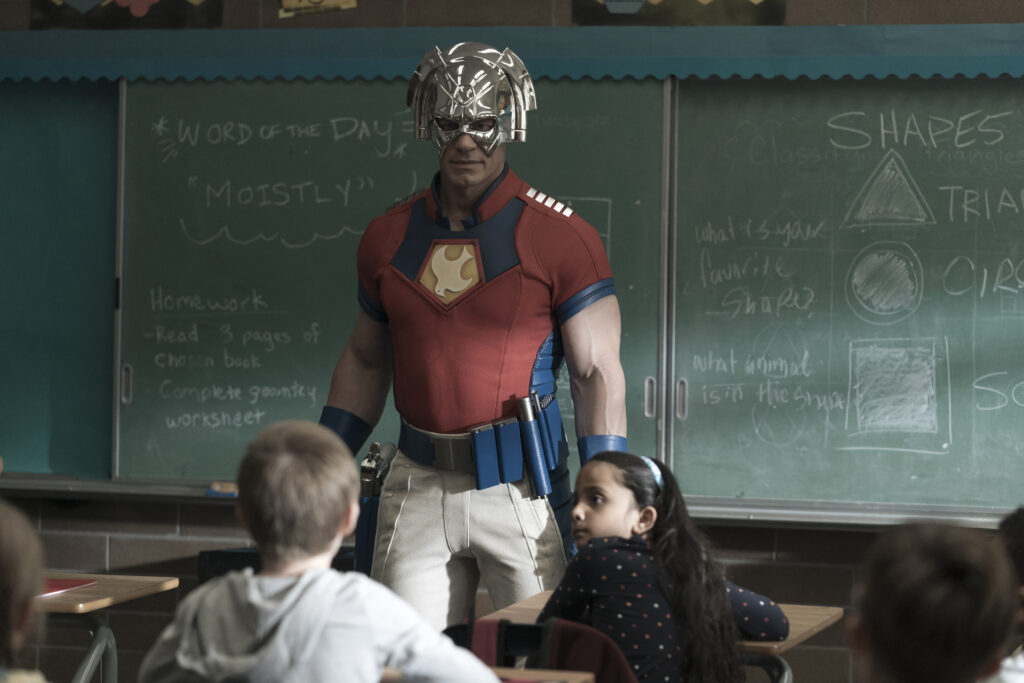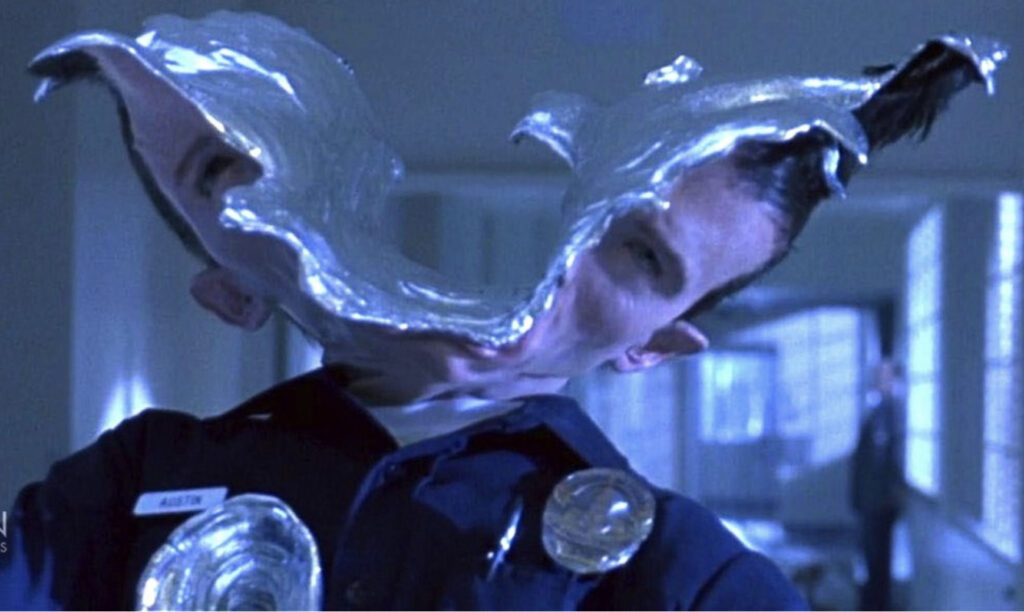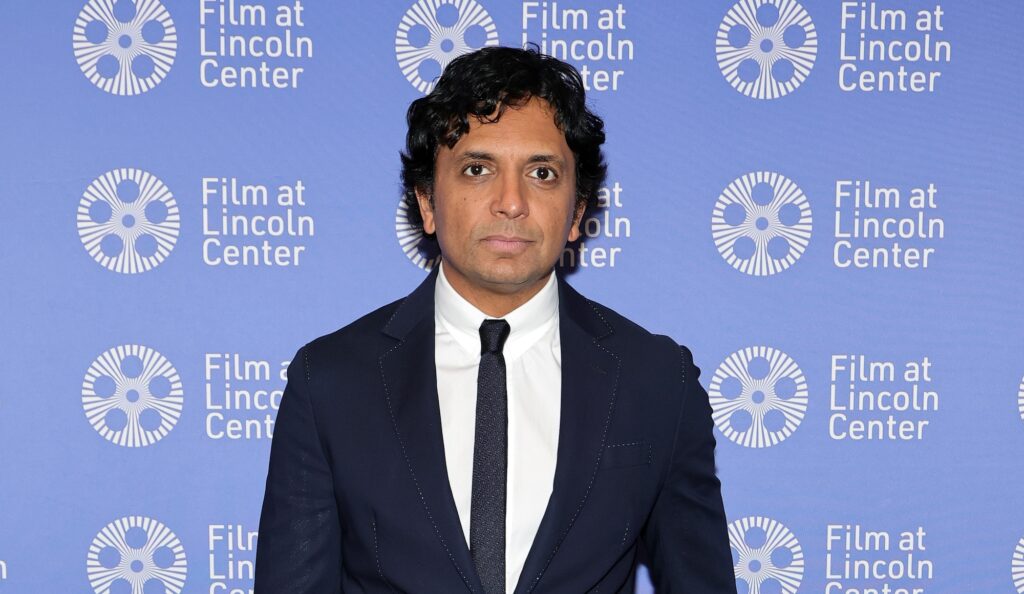This article contains spoilers for Peacemaker season 2 episode 1.
If 1978’s Superman made us believe that a man could fly, 2025’s Superman made us believe that kindness is punk. But masses who loved the message of Superman will be confronted with something a lot closer to usual definition of punk in season two of Peacemaker.
Twenty-three minutes into the show’s season two premiere, the Peacemaker Christopher Smith (John Cena) snorts some cocaine and invites a bunch of friends over for an orgy – not a tastefully shot, largely implied orgy – but a proper orgy, with the camera capturing every type of floppy part used in every imaginable configuration.
Sexually frank as the scene is, it’s also exceptionally well done, written and directed with care by James Gunn and performed with pathos by Cena. Gunn grounds the decision in Smith’s character, as a desperate decision made to deal with a failed audition with the Justice Gang and a frustrating interaction with love interest Emilia Harcourt (Jennifer Holland).
As appropriate to the character and as artistically handled as it is, the orgy scene underscores a limitation of Peacemaker as a character and, potentially, a limitation of James Gunn as the shepherd of the DC Universe. Superhero stories are fundamentally kid’s stories, and Gunn seems solely interested in making decidedly-not-kid-friendly superhero tales.
Silly and Nasty Superheroes
Throughout the first season of Peacemaker, characters took every opportunity to mock the protagonist’s look. His bright red shirt and tight white pants appear even more outrageous when donned by the hulking Cena. His gleaming silver helmet does, as many observe, look exactly like a shiny toilet bowl.
Peacemaker’s costume comes directly from the comics that introduced Chris Smith, first from Charlton Comics and then from DC Comics. It’s just one of many oddities that Gunn lifts directly from the comic book page. Ego the Living Planet, Starro the Conqueror, and Rocket Raccoon are all goofy ideas that, not all that long ago, no Hollywood studio would ever consider spending significant money to bring to life.
When Gunn brings these elements into his movies and TV shows, it feels like more than just fealty to the source material. One gets the sense that he genuinely loves the weirdness of superheroes, even when Rocket is mocking a guy called “Taserface.”
That love underscores an element of superheroes that seems to disinterest Gunn. Superheroes are originally and fundamentally kid’s stories. They began in the late 1930s as disposable adventure tales for children and even though their first readers included American GIs in World War II and even though adults continue to read superhero stories, childishness remains deep in the genre’s DNA.
Yet, a glance at DC Studios’ 2026 slate reveals anything but kids’ stuff. There’s the Green Lantern series Lanterns, described as a gritty cop show in the vein of True Detective, for which Nathan Fillion has dropped a record number of f-bombs in his appearance as Guy Gardner. There’s Supergirl, which picks up from Milly Alcock’s cameo in Superman and begins with the Maid of Might hopping from planet to planet and getting drunk. There’s the Clayface movie written by Mike Flanagan, a “complete horror movie,” in Gunn’s words, about the classic Batman villain.
To be clear, all of these sound great. But none of these sound like they’re made for kids, and that’s a problem.
Think Like a Child
Superhero stories began as kids stories because children are best suited for engaging with the genre. Kids look for clear boundaries of good and evil. Kids need to believe the evils of the world can be thwarted by stopping one person or a small group of people. Just as crucially, kids will more quickly suspend disbelief to accept that someone bitten by a radioactive spider would get superpowers instead of cancer.
Thus, it’s important to make space for them to play in these worlds. Part of the magic of Batman: The Animated Series, Avengers: Earth’s Mightiest Heroes, Spidey and His Amazing Friends, and other cartoon shows is that they offer kids entry into these fantastic worlds, in a way that not even continuity-entangled comics can do anymore. The bright colors and simplistic morality of these stories activate kids’ imagination and gives them building blocks for their own sense of right and wrong.
To be clear, superhero stories need not be only for kids. Gunn in particular has become very good at using the childish quality of superheroes as a launching point for thematic complexity and emotional depth. In The Suicide Squad, Gunn used Starro the Conqueror into a canny metaphor for nations in the Global South seeking weapons of mass destruction as means to political legitimacy. In Guardians of the Galaxy Vol. 3, Rocket’s harrowing evolution served as both a rich character study and an H.G. Wells-like treatise against animal testing.
Perhaps just as impressively, Gunn manages to make these complex stories while retaining the same ribald humor that he developed while getting his start at Troma Entertainment, for whom he wrote Tromeo and Juliet—a movie that added to Shakespeare a penis monster and lots of dismemberment.
Superhero stories can be deep, superhero stories can be trashy, and Gunn has shown that he does both well. Superhero stories can be scary and superhero stories can be violent, and it’s clear that Gunn and DC Studios has these types of projects coming soon. But where are the stories for kids?
Look Up, Look Further
Scrolling down a bit further in DC Studios’s upcoming offerings, we find signs of hope for a wider-range of stories.
First, there’s Dynamic Duo, an animated movie about Dick Grayson and Jason Todd, the first and second people to become Batman’s sidekick Robin. Although both Dick and Jason can be made into darker, more violent characters—see any number of Nightwing and Red Hood comics, or the recent TV series Titans—the fact that Dynamic Duo is being directed by Matthew Aldrich of Coco and Lightyear makes one think that kids will be the primary audience.
Then, there’s the fact that both The Batman Part II and Batman: The Brave and the Bold are being made. The former is, of course, a grounded crime picture from Matt Reeves and the latter is, presumably, a more straightforward superhero tale, with Robin returning to live action. While neither will likely be fully kiddie fare (Brave and the Bold is directed by Andrés Muschietti, who made Mama and It before taking on The Flash), their co-existence shows that DC Studios is willing to support multiple versions of its big characters with different styles for different audiences.
We find the most hope in the past, fittingly enough, in Superman. By his own admission, Superman presented a challenge for Gunn, who gravitates more towards B and C-listers than paragons like the Big Blue Boy Scout. And yet, Gunn managed to retain all of the hero’s essential goodness and kindness, giving supporting characters all of the skepticism that comes more naturally to him and letting Superman stand out as all the more wholesome.
Gunn’s take on Superman made us believe that DC Studios can produce more than R and hard PG-13-rated tales about loser superheroes. Now it’s time to show us that DC Studios can also tell stories for kids, the original superhero audience.
The post Peacemaker and the Problem with James Gunn’s DCU appeared first on Den of Geek.




